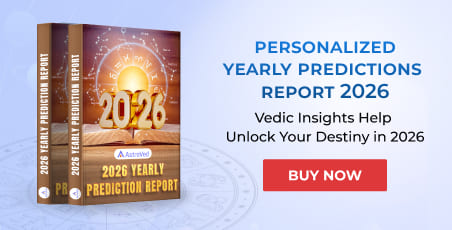Maha Ganapati: Symbols of Prosperity and Wisdom
Ganesha is a beloved Hindu deity who has a special place among millions of devotees worldwide. He is revered as the obstacle remover, a lover of science and arts and a deity of prosperity and wisdom. He is the embodiment of benevolence and divine grace. Ganesha is worshipped in many forms and known as Vignaharta, Vinayaka, Maha Ganapati, and more. His form, Maha Ganapati, is of great relevance to Hindus as he is the giver of wisdom and prosperity to his devotees. Read more to know about it.
 Maha Ganapathi And His Majestic Appearance
Maha Ganapati is one of the 32 forms of Ganesha, but stands out due to his three eyes and red complexion, symbolising his wisdom and immense power. This form of Ganesha is of great spiritual significance and represents knowledge and prosperity. The depiction of this form of Ganesha is fascinating and unique, with each of his attributes having great symbolism.
Like all other Ganesha forms, Maha Ganapati is depicted with an elephant head. He is shown with a red complexion, which refers to dawn. On his head is a crescent moon and a third eye on the forehead, indicating his connection with Lord Shiva. The most interesting aspect of this form is the array of things Ganapati holds in his arms. Each item he has in his hands carries a great spiritual meaning. The tusk he has in one of his arms depicts self-sacrifice, as there are legends that say that he broke it to write the epic Mahabharata. However, there are many versions of the story of the broken tusk. The lotus, blue lily, and pomegranate are symbols of purity, beauty and fertility, respectively showcasing Ganesha’s creative aspect. He holds a sugarcane bow, which indicates the ability to control desire; the discus is a recollection of the eternal nature of the universe. The noose indicates attachment, an essential aspect of life, and the mace is a symbol of power and strength. A paddy sprig and a potful of gems are symbols of abundance and prosperity, depicting the deity’s role as a giver of good luck.
Maha Ganapathi And His Majestic Appearance
Maha Ganapati is one of the 32 forms of Ganesha, but stands out due to his three eyes and red complexion, symbolising his wisdom and immense power. This form of Ganesha is of great spiritual significance and represents knowledge and prosperity. The depiction of this form of Ganesha is fascinating and unique, with each of his attributes having great symbolism.
Like all other Ganesha forms, Maha Ganapati is depicted with an elephant head. He is shown with a red complexion, which refers to dawn. On his head is a crescent moon and a third eye on the forehead, indicating his connection with Lord Shiva. The most interesting aspect of this form is the array of things Ganapati holds in his arms. Each item he has in his hands carries a great spiritual meaning. The tusk he has in one of his arms depicts self-sacrifice, as there are legends that say that he broke it to write the epic Mahabharata. However, there are many versions of the story of the broken tusk. The lotus, blue lily, and pomegranate are symbols of purity, beauty and fertility, respectively showcasing Ganesha’s creative aspect. He holds a sugarcane bow, which indicates the ability to control desire; the discus is a recollection of the eternal nature of the universe. The noose indicates attachment, an essential aspect of life, and the mace is a symbol of power and strength. A paddy sprig and a potful of gems are symbols of abundance and prosperity, depicting the deity’s role as a giver of good luck.
 Maha Ganapathi And His Majestic Appearance
Maha Ganapati is one of the 32 forms of Ganesha, but stands out due to his three eyes and red complexion, symbolising his wisdom and immense power. This form of Ganesha is of great spiritual significance and represents knowledge and prosperity. The depiction of this form of Ganesha is fascinating and unique, with each of his attributes having great symbolism.
Like all other Ganesha forms, Maha Ganapati is depicted with an elephant head. He is shown with a red complexion, which refers to dawn. On his head is a crescent moon and a third eye on the forehead, indicating his connection with Lord Shiva. The most interesting aspect of this form is the array of things Ganapati holds in his arms. Each item he has in his hands carries a great spiritual meaning. The tusk he has in one of his arms depicts self-sacrifice, as there are legends that say that he broke it to write the epic Mahabharata. However, there are many versions of the story of the broken tusk. The lotus, blue lily, and pomegranate are symbols of purity, beauty and fertility, respectively showcasing Ganesha’s creative aspect. He holds a sugarcane bow, which indicates the ability to control desire; the discus is a recollection of the eternal nature of the universe. The noose indicates attachment, an essential aspect of life, and the mace is a symbol of power and strength. A paddy sprig and a potful of gems are symbols of abundance and prosperity, depicting the deity’s role as a giver of good luck.
Maha Ganapathi And His Majestic Appearance
Maha Ganapati is one of the 32 forms of Ganesha, but stands out due to his three eyes and red complexion, symbolising his wisdom and immense power. This form of Ganesha is of great spiritual significance and represents knowledge and prosperity. The depiction of this form of Ganesha is fascinating and unique, with each of his attributes having great symbolism.
Like all other Ganesha forms, Maha Ganapati is depicted with an elephant head. He is shown with a red complexion, which refers to dawn. On his head is a crescent moon and a third eye on the forehead, indicating his connection with Lord Shiva. The most interesting aspect of this form is the array of things Ganapati holds in his arms. Each item he has in his hands carries a great spiritual meaning. The tusk he has in one of his arms depicts self-sacrifice, as there are legends that say that he broke it to write the epic Mahabharata. However, there are many versions of the story of the broken tusk. The lotus, blue lily, and pomegranate are symbols of purity, beauty and fertility, respectively showcasing Ganesha’s creative aspect. He holds a sugarcane bow, which indicates the ability to control desire; the discus is a recollection of the eternal nature of the universe. The noose indicates attachment, an essential aspect of life, and the mace is a symbol of power and strength. A paddy sprig and a potful of gems are symbols of abundance and prosperity, depicting the deity’s role as a giver of good luck.
“Claim Blessings, Clear Karma – Join the Super Grand Sugarcane Ganesha Event!”
The God Of Benevolence And Strength Maha Ganapati is one of the Shakti icons, where he is shown with his female consorts Siddhi and Riddhi. In this form, Maha Ganapati is shown with Siddhi Lakshmi sitting on his lap. She holds a lotus in one hand, which symbolises purity, and her other hand hugs the god. This portrayal of Maha Ganapati with Shakti showcases a balance of benevolence and strength, a core Hindu philosophy principle. The divine couple depicts the unity of female and male energies needed for harmony in the universe. So this form is not just for the sake of worshipping but represents cosmic balance as well as the creation and destruction cycle. Why Does Maha Ganapati Have An Elephant Head? Ganesha is the son of Parvati and Shiva. The story of Ganesha getting an elephant's head goes like this: Once, Parvati was left alone after Shiva went to meditate. To fill the void, she crafted a boy using sandalwood paste, gave it life and called him Ganesha. Parvati asked him to guard her chamber while she took a bath. Shiva returned and wanted to enter Parvati’s chamber, but was not allowed by Ganesha, as he did not know who Shiva was. There was an argument between them, and in anger, Shiva cut Ganesha’s head. Parvati was in grief seeing his dead son, and Shiva, too, realising his mistake, sent his people to bring a head. They got an elephant head, which Shiva placed on Ganesha’s body and brought him back to life. Why Is Maha Ganapati Worshipped Before All Gods In all Hindu festivals and religious events, Maha Ganapathi is first revered, and his blessings are sought for the successful completion of the events. There is a story that explains why this is done. According to a popular tale, a fierce battle between Lalitha (Goddess Maha Tripura Sundari) and the demon Bhandasura took place. During the battle, the demon’s commander used Jayavighna Yantra (a magical device) on the goddess’s army to weaken them. The device made them lazy, tired and forgetful. They dropped weapons and retreated. Seeing this, the goddess’s army commander, Sacikesani, informed Lalitha of this. When she heard, she smiled, and a glowing male with an elephant head (Maha Ganapathi), and ten arms came out of her smile. He went to the battlefield, found the magical device and used his tusk to destroy it. The soldiers were revived, and the goddess’s army easily defeated Bhandasura’s men. Happy with this, Goddess Lalitha announced that Maha Ganapati should be worshipped first before the start of any religious or auspicious event. Conclusion Maha Ganapathi is not only a majestic god but is a symbolic representation of many principles and universal truths. His three eyes, red complexion and arms with items have great spiritual meaning and are thus a revered deity in Hindu mythology. He reminds his devotees of the prosperity, strength and wisdom that a person can attain by understanding cosmic truths.“Claim Blessings, Clear Karma – Join the Super Grand Sugarcane Ganesha Event!”







